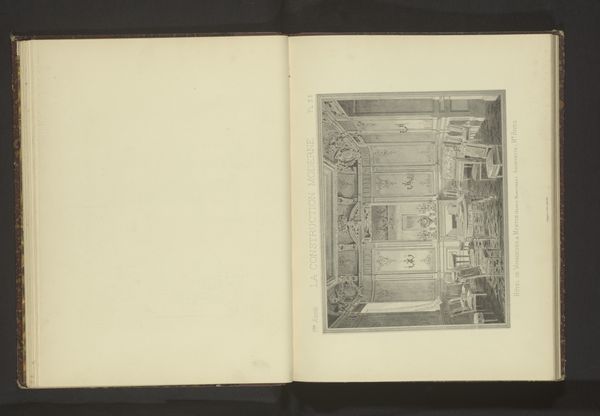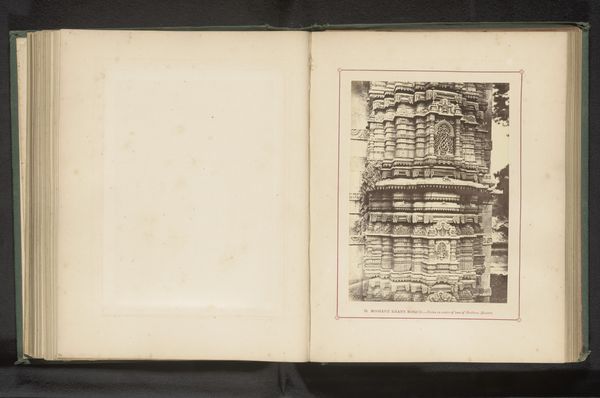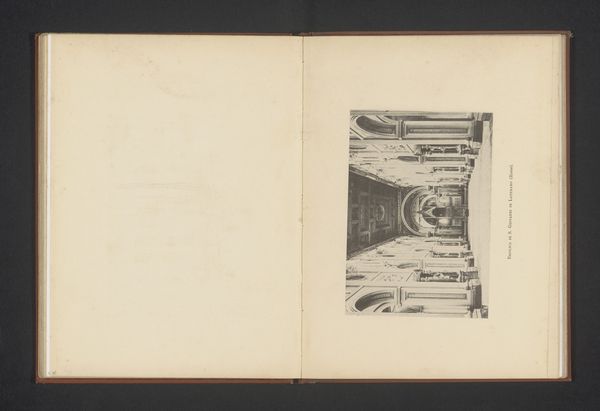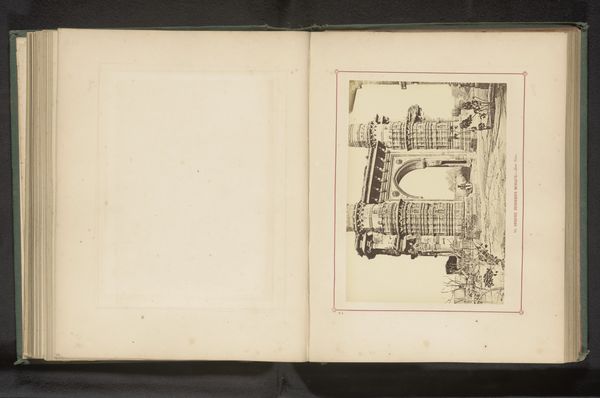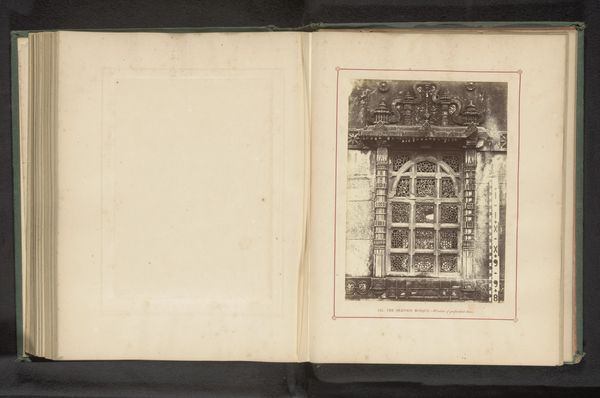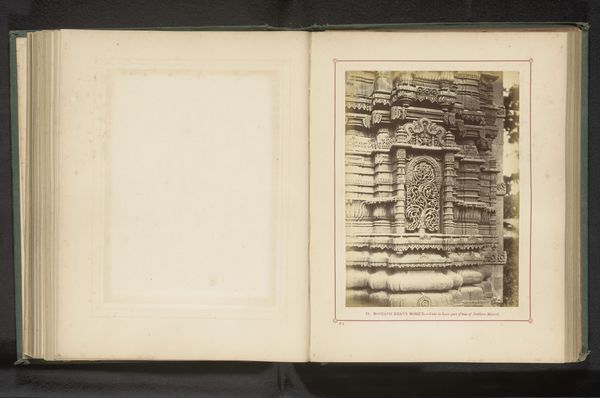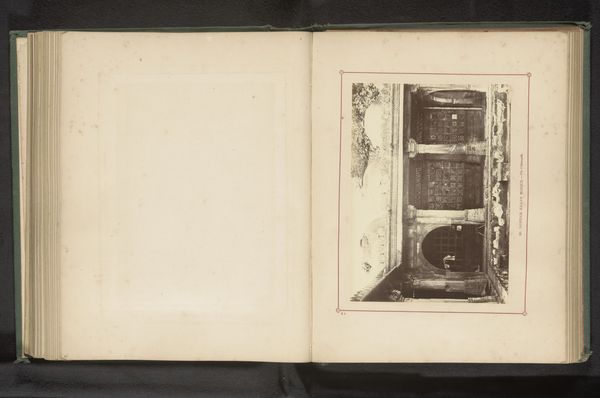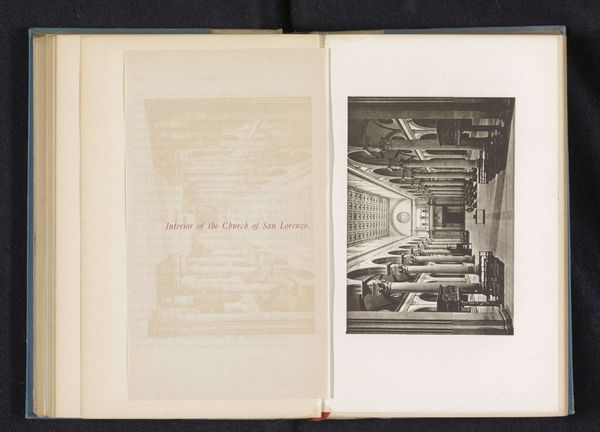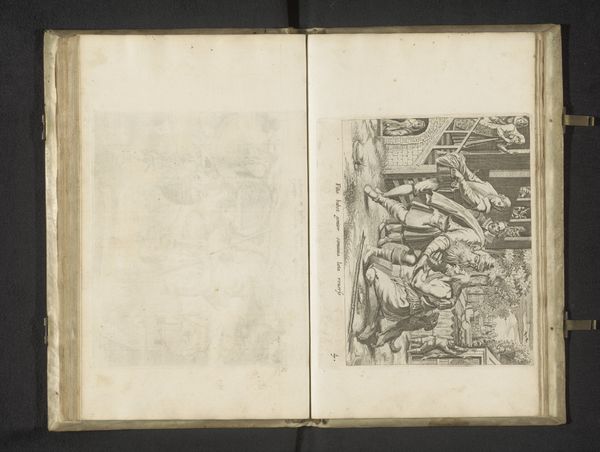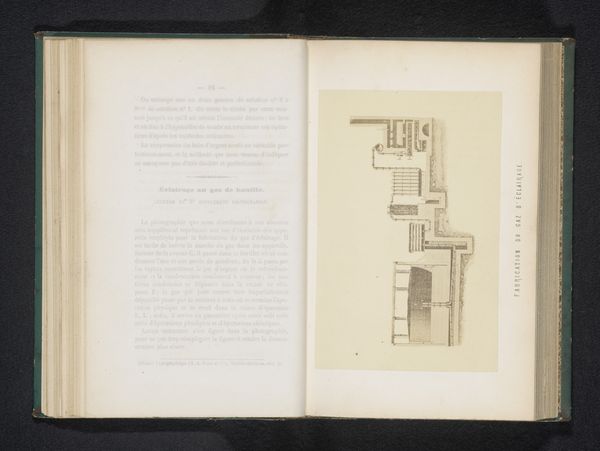
lithograph, print, photography, architecture
#
lithograph
# print
#
landscape
#
photography
#
coloured pencil
#
ancient-mediterranean
#
cityscape
#
watercolor
#
architecture
Dimensions: height 124 mm, width 179 mm
Copyright: Rijks Museum: Open Domain
Curator: Before us we have "Gezicht op een entree van een zaal van Musée archéologique du trocadéro" by Bonnamy, created before 1894. It seems to be a lithograph and photograph layered to capture an architectural space. What are your immediate impressions? Editor: I’m immediately struck by a feeling of fractured memory. The colors—red and blue slightly offset—give a blurry, almost dreamlike quality. It speaks to the nature of remembrance, of looking back at what is lost. Curator: I appreciate that interpretation. Looking at the composition, there's a deliberate emphasis on the architectural elements themselves – the arches, the detailed carvings, the play of light and shadow. This isn't just a representation; it's an exploration of form. Editor: Indeed. Arches often serve as powerful symbols—gateways, transitions between worlds, offering protection or representing passage. Considering this is the entrance hall of a museum of archeology, it suggests entering the realm of ancient knowledge. What once was now available to behold in modernity. Curator: The duplication caused by the offset printing brings about an intriguing visual tension; however, I find the visual technique to highlight depth as somewhat unsuccessful. How well does it relate to its supposed time, the nineteenth century? Editor: Given the context, that’s very poignant. There is the birth of anthropology, alongside a surge in colonialism, and of course museums of that kind held the echoes and the realities of power. That duplication in red and blue mirrors the imperialistic urge to claim and classify, but always just slightly out of reach, altered in transit. Curator: An important consideration. I see this interplay between surface and depth and am stuck by its artistic intention: what does the architecture invite us to question beyond simply its physical qualities and aesthetic merit? Editor: It encourages a thoughtful pause, inviting us to think about our relationship with the past. I find myself quite affected and reminded that symbols continue to exist across time. Curator: A fine thought to consider—we might indeed think of this piece, its architecture, and how we move forward and view art with intentionality. Editor: Agreed, a fitting reflection for understanding visual and material histories.
Comments
No comments
Be the first to comment and join the conversation on the ultimate creative platform.
